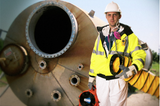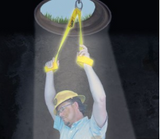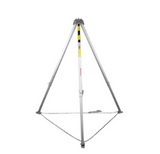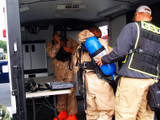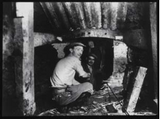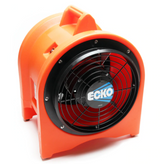Blog
Confined Space Communication Must Be 100% Effective
For effective communication, a message must be sent, received and understood. Sounds simple enough, but when working in a confined space with noise, machinery, and respiratory protective equipment in place, communication can be a challenge.
Confined spaces can also create an echo that interferes with clear communication. If there is an emergency situation, you can add anxiety and labored breath to the equation. All this highlights the need for a clear and reliable confined space communi
…
May 9th 2015
Gas Sensors: How Do Gas Monitor Sensors Work?
The sensors in your gas monitor work in different ways to keep you safe. Some wear out relatively quickly, while others could conceivably last forever. Here is a very quick overview to help you understand basic gas sensor technology. We hope this information will allow you to see the benefits of regular maintenance, bump testing and
calibration.
The most common sensors used in confined space work are Oxygen, % LEL (Lower Explosive Level), Carbon Monoxide, and Hydrogen Sulfide. Howeve
…
May 2nd 2015
Why You Should Add Wristlets to Your Rescue Kit
Wristlets are deployed when there is no other way to get a rescuer or victim out of a confined space. Most often this is because the entry is too narrow or restricted to allow retrieval with a regular
harness and a D-ring attachment.
Wristlets must be used carefully because they can put so much strain on a persons joints and muscles. This can be painful and may cause injury, but in an emergency they can be an excellent rescue tool.
Wrist straps are also used for horizontal extr
…
Apr 25th 2015
Dewatering Pump Makes Wet Confined Space Work Possible
Confined spaces are far from the cleanest places around. Sometimes they are soggy as well. If your work requires you to be be in a space where the water cannot be turned off - a storm drain or other water system for instance - a
dewatering or sludge pump may be the answer.
Confined spaces require small pumps that are portable and can move major amounts of water. Allegro Industries makes top quality pumps specifically for clearing work spaces and they can continue running for long per
…
Apr 25th 2015
Tripods: What You Need to Know Before You Buy
Confined space entry requires a method of extraction for the entrant if they become incapacitated. Often this requirement is met by erecting a tripod over the entry point.
At Pksafety.com we offer two types of tripods, and people generally choose one or the other depending on how often they will be using them.
The less expensive model is the
AK105A 8 ft. tripod. It's great for occasional use, and is lightweight and easy to assemble.
One drawback is that the Protecta
AK
…
Apr 18th 2015
SCBA and Supplied Air Respirators for Confined Space Entry
Some confined spaces just aren't fit to breath in. Respiratory protection, whether for work in a space with Immediate Danger to Life and Health (IDLH) or in a rescue operation where air filtering or purifying respirators are not an option, has two critical requirements: First, it must provide a clean air supply. Secondly, it cannot interfere with safe entry and exit from the space. The two types of breathing devices that fit these requirements are a
self-contained breathing apparatus (SCBA
…
Apr 10th 2015
Dangers of a Cold Confined Space
Just as heat in confined spaces can cause added danger to entrants, so too can cold temperatures. Here are a list of procedures to follow to avoid cold-related injury while working in a confined space:
Increase the temperature by heating the atmosphere within your confined space. If you decide to heat the environment, be sure it is safe to do so. You don't want to introduce a new ignition source to the area. Also when heating a confined space, you must ensure there is no increase in vap
…
Apr 4th 2015
Hydration in Confined Spaces
Hydration is often a forgotten element of safety in a confined space. With so many potential hazards during confined space entry, loss of water because of sweating isn't high on the list for many workers. However, hydration is just as important as many of the other safety considerations of a confined space project.
Fluids lost in a hot environment, or because entrants are wearing protective, and non-breathable clothing, must be replaced to help prevent heat-related injuries.
To pr
…
Mar 21st 2015
Entry or Rescue in an Inert Atmosphere
Typically gases such as nitrogen or carbon dioxide are used to remove oxygen from a confined space and render it inert. Often an area is made inert in order to remove the potential for fire, or to stop oxidation of a product within a space and keep it from spoiling. If you are attempting a rescue, or have other need of entry, you must be able to anticipate what changes may result within the space if you return an oxygenated, breathable atmosphere to the area.
To do this, you must
…
Mar 14th 2015
Oxygen-Rich Environment Safety
For an oxygen-rich atmosphere, it's important to always make sure that gases expelled from the confined space through ventilation do not come into contact with internal combustion engines, flames or other sources of ignition that may cause an explosion or accelerate burning.
While this might seem obvious, it is sometimes overlooked in the rush to clear a confined space and make it safe for entry.
When sizing up a potential confined space for entry, also be aware of where you are p
…
Mar 6th 2015


